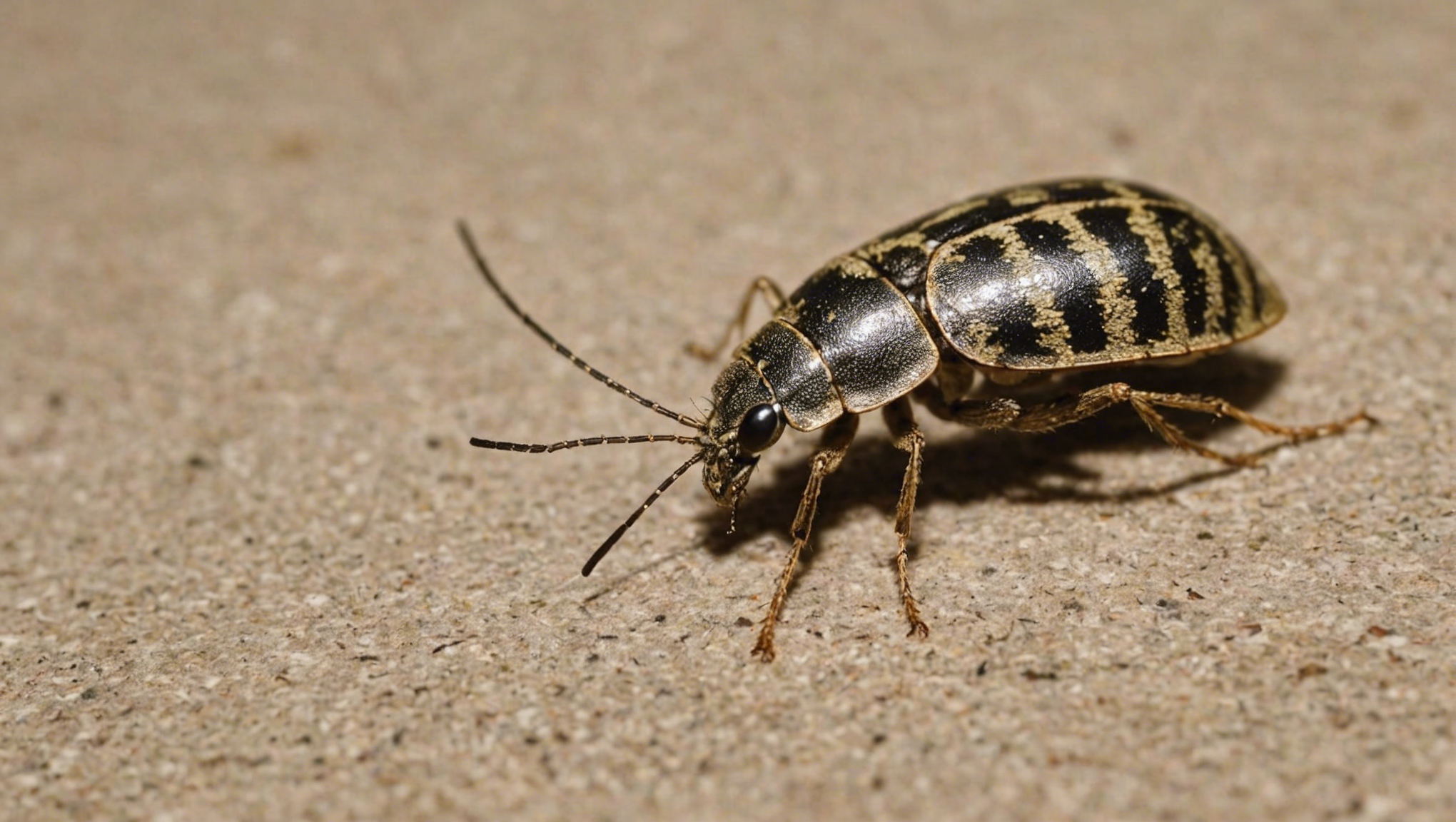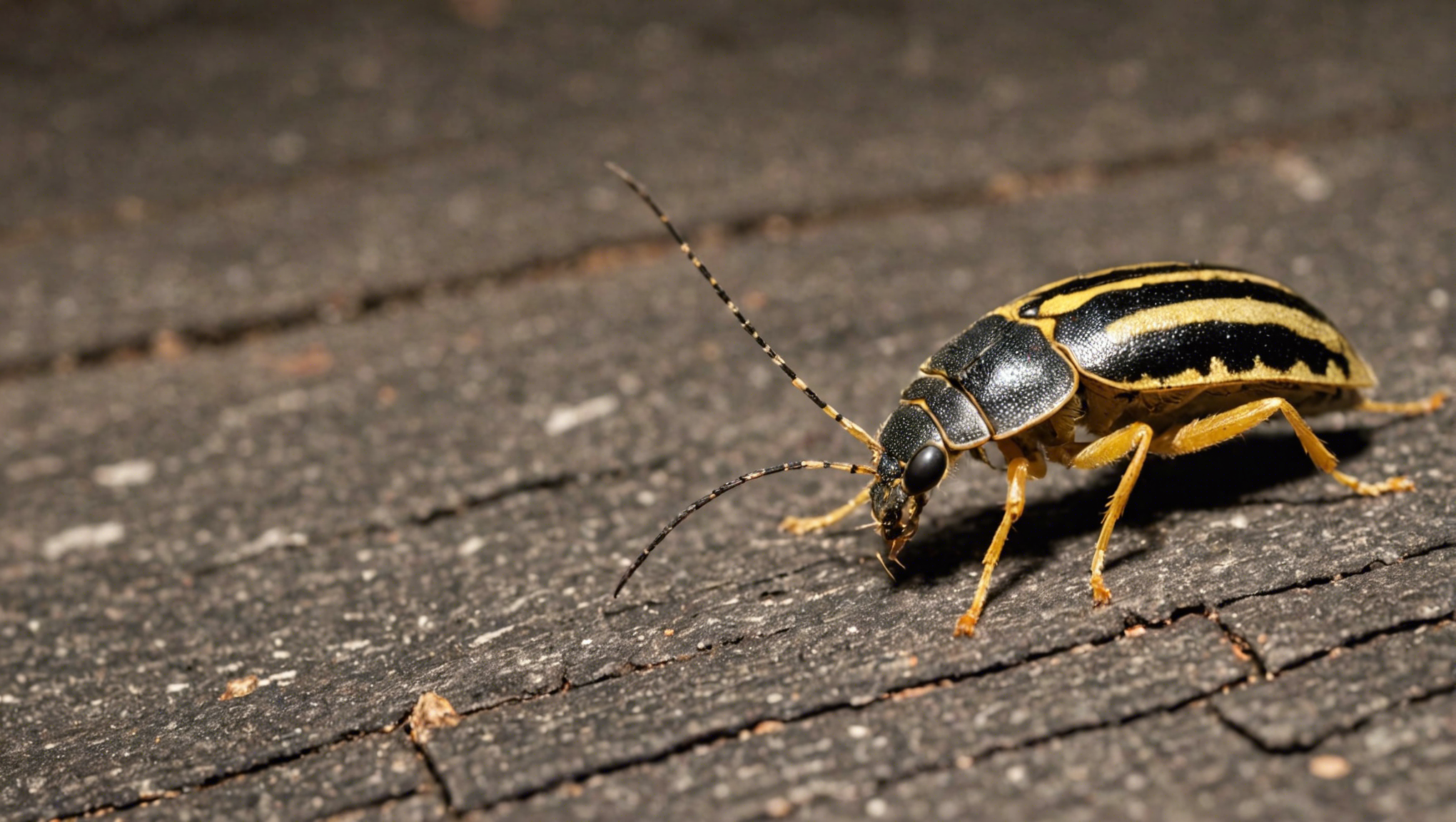Discovering pest infestations early can save you time, money, and stress. Learn how to identify the early signs of pest problems in your home before they become a bigger issue.
Identifying early signs of pest infestation

Pest infestations can cause serious problems for homeowners and businesses, leading to property damage, health risks, and financial burdens. Early detection of pest issues is crucial to prevent infestations from spreading and causing further harm. By knowing the early signs of pest infestation, you can take proactive measures to address the problem effectively.
visual cues
One of the first indicators of a pest infestation is the presence of droppings, urine stains, or gnaw marks. Check for these visual cues in areas where pests are likely to hide, such as behind appliances, in cabinets, or along baseboards.
Another visual sign to look out for is nesting materials or pathways. Pests like rodents and insects often create nests using materials they find in your home or business. Identifying these nests can help you locate the source of the infestation.
unusual odors
Strange or foul odors can also indicate a pest problem. Rodents, cockroaches, and other pests can emit distinct smells that may linger in the air. If you notice an unusual odor that you can’t identify, it could be a sign of a hidden infestation.
strange sounds
Listen for any unusual sounds coming from walls, ceilings, or attics. Pests like rodents, termites, and ants can be noisy when they are active in your home. Scratching, gnawing, or squeaking sounds may indicate the presence of unwanted visitors.
damage to property
Inspect your property for any signs of damage caused by pests. This could include chewed wires, holes in walls or furniture, or shredded paper or fabric. Structural damage caused by pests can be costly to repair, so it’s important to address the issue as soon as possible.
In conclusion, identifying early signs of pest infestation is key to preventing a minor problem from turning into a major headache. By staying vigilant and taking prompt action, you can protect your home or business from the damaging effects of pest infestations.
Common signs of pest infestation at home

When it comes to dealing with pests in your home, early detection is key to preventing a full-blown infestation. Here are some common signs that indicate you may have unwelcome critters making themselves at home:
1. Unusual Odors
Pest infestations often come with distinctive smells. Pungent, musty, or urine-like odors can indicate the presence of pests such as rodents, cockroaches, or bed bugs.
2. Droppings or Shed Skins
Finding droppings or shed skins in certain areas of your home is a clear sign of a pest infestation. Rodent droppings, insect exoskeletons, or termite wings are all indicators that pests are present.
3. Gnawed or Damaged Items
If you notice chewed cables, gnawed furniture, or holes in food packaging, pests are likely the culprits. Rodents such as mice and rats tend to leave behind physical damage in their quest for food and nesting materials.
4. Nesting Materials
Finding nests or nesting materials like shredded paper, fabric, or insulation in hidden corners of your home points towards a pest problem. Pests create nests to reproduce and shelter their young, so spotting these materials is a cause for concern.
5. Scratching or Scurrying Sounds
If you hear scratching or scurrying sounds, especially at night, it may be a sign of pests moving around within your walls or ceilings. Rodents and insects are active at night, so these noises are often an indication of their presence.
By being vigilant and aware of these common signs of pest infestation, you can take prompt action to address the issue before it escalates into a larger problem. Consulting with a professional pest control service can help you safely and effectively eradicate pests from your home.
Tips for recognizing pest infestation early

Recognizing Early Signs of Pest Infestation
Pest infestations can wreak havoc on your home or outdoor spaces if not detected early. Here are some tips for recognizing pest infestation signs early to take prompt action:
1. Unusual Sounds or Smells: Keep an ear out for any scurrying noises, scratching sounds, or distinctive odors that could indicate the presence of pests such as rodents, insects, or even termites.
2. Visible Droppings or Nests: Pest droppings, nests, or gnaw marks may be visible in areas where pests are active. Inspect dark corners, storage areas, or behind furniture for such signs.
3. Damage to Property: Look out for property damage like chewed wires, gnawed wood, holes in walls, or damaged fabrics. These can indicate a pest problem that needs attention.
Common Pests to Watch Out For
Being familiar with the common pests in your area can help you identify an infestation early. Here are some pests to watch out for:
- Rodents: Rats and mice are known for leaving droppings, gnaw marks, and nesting in dark spaces.
- Insects: Cockroaches, ants, bed bugs, and termites are common indoor pests that leave visible signs of infestation.
- Wildlife: Squirrels, raccoons, or birds can also infest outdoor spaces, causing damage and creating unsanitary conditions.
Preventing Pest Infestation
Taking preventative measures is key to avoiding pest infestations. Here are some tips to keep pests at bay:
1. Seal Entry Points: Close off any gaps, cracks, or openings that pests could use to enter your home or outdoor structures.
2. Maintain Cleanliness: Regularly clean and declutter your living spaces to eliminate potential food sources and breeding grounds for pests.
3. Address Moisture Issues: Fix leaky pipes, ventilate damp areas, and keep outdoor spaces well-drained to prevent pests like insects and rodents from thriving.
4. Regular Inspections: Conduct routine inspections of your property to catch any signs of pest activity early and address them promptly.
Early detection of pests in your home
importance of early detection
Pests in your home can pose serious health risks and damage to property if left unnoticed. Early detection of pests is crucial to prevent infestations from escalating.
common signs of pest infestation
1. Droppings: Finding droppings in and around your home is a clear indicator of pest presence.
2. Gnawed items: Pests like rodents often chew on wires, furniture, and walls.
3. Unusual odours: Foul smells can be a sign of pests nesting in hidden areas.
4. Visible pests: Spotting pests like insects or rodents is a clear indication of infestation.
best practices for early detection
1. Regular inspections: Conduct routine checks of your home, focusing on areas where pests are likely to hide.
2. Seal entry points: Prevent pests from entering your home by sealing cracks, gaps, and holes.
3. Maintain cleanliness: Keep your home clean and clutter-free to eliminate potential hiding spots for pests.
4. Monitor outdoor areas: Regularly inspect your yard and outdoor spaces for signs of pest activity.
professional pest control services
If you suspect a pest infestation in your home, consider hiring professional pest control services. Experts can help identify the type of pests, assess the extent of the infestation, and provide tailored solutions to eradicate them.
By being vigilant and proactive in detecting pests in your home, you can effectively prevent infestations and ensure a safe and healthy living environment for you and your family.
Recognizing signs of pest infestation
Dealing with a pest infestation can be a frustrating and challenging experience for homeowners. Whether it’s ants invading your kitchen or rodents making themselves at home in your walls, early detection is key to effectively addressing the issue. Being able to recognize the signs of a pest infestation is crucial in preventing further damage and minimizing the risk of health hazards.
common signs of pest infestation
Pest droppings: One of the most obvious signs of a pest infestation is the presence of pest droppings in and around your living spaces. Keep an eye out for small, dark droppings that resemble black grains of rice, as these could be indicators of a rodent or insect problem.
Strange odors: Unusual or unpleasant odors emanating from areas like the kitchen, attic, or basement could signal the presence of pests. Different pests, such as cockroaches or rodents, can leave behind distinct smells that are a telltale sign of their presence.
Gnawed materials: If you notice gnaw marks or chewed-up materials around your home, it’s a clear sign of a pest infestation. Rodents, in particular, have a habit of gnawing on wires, wood, and insulation, which can pose serious safety risks.
ways to prevent and address pest infestations
Implementing good sanitation practices is essential in preventing pest infestations. Make sure to keep your home clean and clutter-free, store food in airtight containers, and promptly dispose of garbage to deprive pests of potential food sources.
Sealing off entry points is another effective way to prevent pests from infiltrating your home. Check for gaps and cracks in doors, windows, and walls, and make necessary repairs to keep pests out. Installing screens on windows and doors can also help prevent insects from getting inside.
Scheduling regular pest inspections with a professional exterminator can help catch pest problems early on and prevent them from escalating. A trained pest control expert can identify potential entry points, assess the extent of infestations, and provide targeted solutions to address the issue.
By staying vigilant and recognizing the signs of pest infestation early, homeowners can take proactive steps to safeguard their homes against unwanted invaders. Don’t ignore the warning signs and address pest problems promptly to maintain a safe and healthy living environment.
